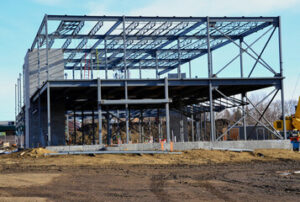Professional excavation contractors specialize in laying the groundwork for construction projects. Their expertise paves the way for foundations, roads, and public utilities to be constructed on solid ground.

When looking for an excavating contractor, review their history and project experience. Find out what types of equipment they use and if they have any special certifications or licenses to do their work. Contact Bar T Excavation, LLC for professional help.
A construction project’s foundation sets the tone for its overall structural integrity, influencing everything from a building’s stability to its environmental impact. An excavating contractor is a vital part of this process, digging the necessary trenches to establish a firm base and exploring sites for any potential dangers or historical artifacts that require preservation.
Prior to any digging, an excavation company will perform a soil classification to evaluate its consistency and determine the best method for site preparation. This often involves removing any vegetation or existing structures to gain an accurate picture of the site and its conditions. Once this step is complete, the process of excavation can begin, with each step tailored to the specific requirements of the foundation being built.
Foundation excavations can be quite complex, with each phase requiring extensive knowledge and sophisticated equipment. A reputable and experienced excavation contractor will utilize a variety of machinery including bulldozers, backhoes, and graders. They will also have a team of experienced and certified operators to operate each piece of equipment and oversee the excavation and backfilling process.
After the foundation trenches are dug, excavation contractors will proceed to the next crucial step of preparing the ground for the concrete slab that will sit on top. This process includes soil compaction and stabilization, which are both essential for ensuring the foundation’s long-term success by minimizing settlement risks and enhancing load-bearing capacity. Compaction is achieved by strategically utilizing heavy machinery that compresses the soil, eliminating air voids and increasing its density. The type of machine used will depend on the soil’s composition, with cohesive soils responding better to machines that apply a kneading action, and granular soils responding well to equipment that delivers a vibratory force.
Once the soil has been stabilized, excavation contractors will grade the terrain to match the desired elevations outlined in the construction plans. This may involve leveling hills, filling valleys, and shaping the landscape to guide surface water away from the foundation area, thereby reducing the risk of erosion and water damage.
Excavation
Construction projects require a lot of planning and groundwork, and excavating contractors are a big part of that. They are usually among the first workers to arrive at a construction site and lay the foundation for future building activities. This includes digging openings for foundations, trenches and utilities, as well as land clearing and grading.
When choosing an excavation contractor, look for someone who has a good reputation in the industry. Check references and online reviews to get an idea of their quality of work, professionalism and customer service. You also want to make sure that the contractor is licensed and insured, which ensures that they are qualified to do the job and have adequate coverage in case of damage or accidents during the process.
Once the project is outlined and the location of the excavation has been determined, an excavating contractor can prepare a detailed excavation plan. This may include a timeline, methods and techniques to be used and equipment required. In addition, it will often detail the steps that will be taken to minimize environmental impact and manage any risks associated with the excavation work.
As the actual excavation begins, a skilled excavation contractor will use advanced equipment to dig the required openings. They will then carefully backfill the area with the appropriate materials to protect the integrity of the surrounding soil. This is an important step that can significantly affect the durability of the finished structure.
Excavation services can also involve trenching, which involves laying pipes for utilities like water, sewer and electrical. These are a necessary part of any construction project, and can be very challenging to perform correctly. A skilled excavation contractor will be able to complete these tasks quickly and accurately, while also taking the necessary measures to protect underground public utility lines and other infrastructure.
Depending on the job, an excavation contractor may need to rent or borrow heavy machinery to carry out the required digging. This can add a significant cost to the overall price of the project, so it’s a good idea to choose a company that has its own fleet of excavating equipment. This can help to keep costs down and ensure that the project is completed on time.
Clearing the Site
When an excavator contractor is chosen for a construction project, their work begins with site preparation. This involves clearing the site of any existing structures or vegetation and preparing the ground for foundations, utility installations, and other construction activities. It requires careful planning and attention to detail, as this first phase of construction sets the stage for all other activities that follow.
Clearing the site often includes land grubbing, where raw land is cleared of surface debris such as roots, logs, rocks, and more. In addition to removing any unwanted materials, this process also allows contractors to identify and mark underground utility lines. This helps prevent accidental damage during excavation and construction, which can be very costly.
Once the site is clear, grading and leveling the soil may be necessary. These processes reshape the land and make it flat or sloped as required by the design of the new structure, and they ensure that the soil is ready to support heavy construction loads. Excavation contractors use heavy machinery such as graders and bulldozers to perform these tasks, which are vital for ensuring that the foundations of any future buildings will be stable and secure.
Other important site preparation steps include erosion control, where methods like silt fences and sediment basins are used to prevent erosion and runoff during construction. This is crucial for preserving and protecting local waterways and reducing environmental damage. It is also important to establish a good drainage system on the construction site to prevent water from pooling around the foundations of any buildings and causing structural problems.
During this phase, it is also essential to test the soil for stability and other factors that can affect the building’s longevity. Having the right geotechnical team on hand to perform tests is vital for this, as it will allow the excavation contractor to determine if any additional measures are needed before construction can begin.
An excavator contractor’s responsibilities also include the securing of any required permits and approvals from local authorities. This is an important step, as failing to get the proper permits can lead to legal complications, delays, and added costs. The contractor should be able to guide the project owner through this process, helping them understand what is required and how it will impact the timeline and budget.
Pouring Concrete
While concrete construction is often a secondary service offered by excavation contractors, it’s an important one that can add significant value to a project. For instance, the quality and durability of a concrete structure can have a major impact on its overall cost and performance. For this reason, excavation contractors who also offer concrete services can help their clients save on future maintenance expenses while delivering a high-quality result.
While many people assume that construction projects just happen overnight, new buildings and infrastructure developments require a series of critical processes to get them off the ground. This is especially true of large-scale construction, which can involve extensive excavation work. As a result, excavating contractors are in high demand and play a vital role in laying the foundation for successful construction projects.
For example, in addition to digging foundation trenches, they are responsible for transforming raw land into buildable lots while balancing ecological considerations with the need for development. This process can involve clearing trees, brush, and debris while ensuring that soil conditions are suitable for construction.
Furthermore, excavating contractors are often tasked with removing and relocating underground utilities. This can be challenging as it requires them to work safely and carefully. They can also liaise with paving teams to ensure that roads are properly prepared for asphalt laying.
Another significant area of excavation contractor responsibility involves installing essential utilities like sewage, power, and water systems. This can be accomplished through trenching, which involves digging narrow excavations to accommodate the utilities. The contractor must ensure that the lines are appropriately installed, integrated into the construction site, and functional.
As the construction industry continues to expand, excavation contractors are increasingly in high demand. This reflects a growing need for new homes, commercial buildings, and public infrastructure across the country. In addition, renovation and redevelopment activities are on the rise and have increased the need for excavation contractors to provide specialized services.
When hiring an excavation contractor, it’s important to make sure that they have the proper licensing and experience for your specific needs. It’s also a good idea to ask them if they need a permit for your job. This can prevent misunderstandings and delays, which can derail the construction timeline and increase costs for your project.

